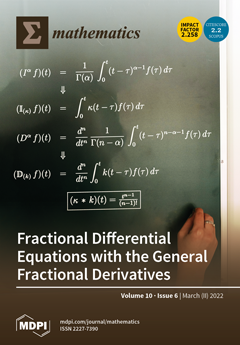A domination coloring of a graph
G is a proper vertex coloring of
G, such that each vertex of
G dominates at least one color class (possibly its own class), and each color class is dominated by at least one vertex. The
[...] Read more.
A domination coloring of a graph
G is a proper vertex coloring of
G, such that each vertex of
G dominates at least one color class (possibly its own class), and each color class is dominated by at least one vertex. The minimum number of colors among all domination colorings is called the domination chromatic number, denoted by
. In this paper, we study the complexity of the
k-domination coloring problem by proving its NP-completeness for arbitrary graphs. We give basic results and properties of
, including the bounds and characterization results, and further research
of some special classes of graphs, such as the split graphs, the generalized Petersen graphs, corona products, and edge corona products. Several results on graphs with
are presented. Moreover, an application of domination colorings in social networks is proposed.
Full article





